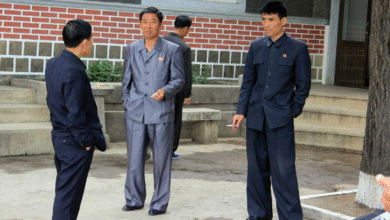Steel and Aluminum Tariffs Expanded to 407 Additional Products

Steel and aluminum tariffs have recently taken center stage in U.S. trade policy with the Trump administration’s significant expansion of duties on over 400 additional product types. This strategic move not only amplifies existing import duties but marks a pivotal shift in how the U.S. manages trade relationships involving these crucial metals. Items affected by the tariffs range from everyday car parts to specialized chemicals, potentially impacting consumers with higher prices and a more strained supply chain. Critics argue that the broader scope of these tariffs, which now encompass nearly all goods related to steel and aluminum, could have severe repercussions for various industries reliant on these materials. As the Trump tariffs reshape the market landscape, understanding the implications of tariff expansion becomes indispensable for businesses navigating this new landscape and for consumers facing rising costs.
In recent updates, the administration has broadened its approach to import duties that engage the steel and aluminum markets, amplifying the current trade restrictions significantly. This extension affects a wide array of goods, signaling a shift in regulatory practices regarding these essential resources that are pivotal in numerous sectors from manufacturing to construction. The inclusion of such a vast range of products reflects not just a reaction to economic pressures but a proactive stance aimed at revitalizing domestic industries. Experts warn that these newly adjusted tariffs will further complicate the supply chain, prompting discussions about the future of American manufacturing and consumer pricing amidst escalating costs. Consequently, businesses need to adapt swiftly to this transformation in U.S. trade policy to mitigate potential disruptions.
Understanding the Steel and Aluminum Tariffs Expansion
The recent decision by the Trump administration to expand steel and aluminum tariffs is a significant move in U.S. trade policy. Previously set at 25% on steel and 10% on aluminum, the new higher rates of 50% now encompass over 400 new product types that integrate these metals. This expansion was not just a slight tweak; it represents a strategic overhaul aimed at protecting American manufacturing and addressing trade imbalances. Items ranging from car parts to fire extinguishers now fall under these tariffs, marking a shift in how the government regulates foreign goods that compete with domestic industries.
As these tariffs roll out, consumers and businesses alike should brace themselves for potential price increases on a variety of essential goods. The inclusion of everyday items such as machinery and specialty chemicals means that consumers could experience higher costs at the checkout line. Economists predict that the import duties will further strain the U.S. supply chain, complicating logistics and pricing within affected sectors. Understanding these tariffs is crucial for businesses, as navigating the complexities of these new regulations will require them to adjust their supply chains significantly.
Economic Impacts of Tariff Expansion on Supply Chains
Tariff expansions, like the recent increases on steel and aluminum, carry significant implications for the U.S. supply chain. Businesses that rely on imported materials face heightened costs, which may compel them to either absorb these expenses or pass them on to consumers. For example, manufacturers who use aluminum components must now deal with inflated material costs, prompting them to re-evaluate their sourcing strategies and possibly seek domestic alternatives. This disruption could lead to delays or shortages in production, affecting completion times across various industries.
Furthermore, the ripple effects of these tariffs extend beyond just the immediate costs of materials. As industries adjust to the new tariff structure, they may seek to streamline operations or innovate alternative solutions. The dynamic nature of U.S. trade policy under Trump’s administration, characterized by such tariff expansions, puts pressure on supply chains to become more resilient. Businesses that invest in understanding these market shifts are likely to better navigate the turbulent landscape created by these import duties, ultimately improving their competitive edge.
The Role of Tariffs in U.S. Trade Policy Post-Trump
The evolution of tariffs under Donald Trump’s presidency illustrates a notable shift in U.S. trade policy, emphasizing protectionism over traditional free trade practices. By strategically implementing tariffs on imports like steel and aluminum, the administration aims to bolster domestic production and safeguard American jobs. Tariff expansion initiatives such as these highlight an ongoing trend of using import duties as a tool to reshape trading relationships and influence foreign markets. As part of this strategic pivot, American manufacturers are expected to benefit from reduced foreign competition and an incentivized increase in domestic production.
However, the implications of these tariff policies extend beyond border control; they impact international relations and trade agreements. Countries affected by the steel and aluminum tariffs may seek retaliatory measures, which could trigger a trade war, further complicating the global marketplace. Businesses involved in international trade must remain acutely aware of how Trump’s tariff expansions could affect their operations and relationships with foreign suppliers. As import duties fluctuate, understanding the broader implications on U.S. trade policy will be critical for companies to thrive in a shifting economic landscape.
Consumer Reactions to Increased Prices Due to Tariffs
With the expansion of steel and aluminum tariffs, consumer expectations regarding product pricing are likely to shift significantly. As companies adjust to the impending price increases caused by heightened import duties, consumers may find themselves footing the bill in the form of higher retail prices. This could lead to consumer pushback, as many might opt for alternatives or delay purchases of affected products, from car parts to home appliances, thereby impacting overall sales for brands dependent on these materials.
Consumer sentiment plays a crucial role in adaptive strategies for businesses facing new tariffs. Retailers and manufacturers need to communicate transparently about the reasons behind price hikes, potentially fostering goodwill and understanding among customers. Balancing pricing strategies without sacrificing brand loyalty will be essential as businesses navigate this new landscape. In addition, companies might explore innovative product offerings or bundling deals to mitigate the impact on consumer behavior, ensuring they remain competitive in a challenging market stimulated by these expanded tariffs.
Navigating Tariff Regulations: Challenges for Businesses
As businesses confront the realities of newly expanded tariffs, they face several challenges in navigating the complex regulatory landscape. Understanding the comprehensive lists of affected products, which are marked only by customs codes, complicates compliance efforts. Companies must invest time and resources into deciphering these codes to ensure they remain compliant with new regulations. Failure to do so could result in costly penalties and disruptions to their supply chains, emphasizing the importance of robust monitoring systems and legal oversight.
Moreover, the uncertainty surrounding future tariff policies can complicate long-term planning for businesses across various sectors. Companies must be agile, adjusting their procurement strategies to account for fluctuating costs and potential retaliatory tariffs from foreign governments. This environment calls for enhanced risk management as businesses consider diversification of suppliers and markets to mitigate exposure to tariff implications. In this context, having a proactive strategy for trade compliance and supply chain management becomes even more critical to maintain stability amidst the shifting landscape of U.S. trade policy.
The Broader Impact of Tariff Policies on Global Trade
The expansion of steel and aluminum tariffs has implications that extend well beyond U.S. borders, influencing global trade dynamics and the economic relationships the United States maintains with other countries. Tariff policies affect not only American industries but also the global supply chain, as U.S. demand interlinks with foreign production. Countries reliant on exporting steel and aluminum to the U.S. now face challenges, potentially leading to economic strain or shifts in trade alliances as they seek alternative markets.
Furthermore, as nations respond to U.S. tariff expansions with their own trade measures, a possibility arises for a more protectionist global environment, resulting in an overall decrease in international trade volumes. This could hamper economic growth and innovation as markets become increasingly insulated from competitive pressures. Understanding these broader implications is crucial for businesses and policymakers alike, as they navigate a complex web of global interdependence intensified by tariff policies. The ability to adapt in this evolving landscape may determine success in future international dealings.
Long-term Outcomes of U.S. Tariffs on Domestic Industries
The long-term outcomes of the recently expanded steel and aluminum tariffs on U.S. domestic industries remain a topic of intense debate among economists and policymakers. Proponents of tariff expansions argue that such measures protect American jobs by incentivizing local production and reducing reliance on foreign imports. However, critics contend that these tariffs could lead to negative repercussions, such as job losses in industries dependent on affordable imported materials. As the economic landscape evolves, the reality of these tariffs will likely continue to shape the complexities faced by different sectors.
Over time, we may also observe shifts in consumer behavior and business strategies as companies adapt to the new cost structure imposed by tariff policies. Businesses may invest more heavily in automation and alternative materials to circumvent steel and aluminum reliance, thereby fostering innovation. However, if the tariffs lead to significant inflationary pressures, the negative effects could outweigh the intended protective measures for domestic industries. Ultimately, understanding these long-term implications on both production and consumption patterns will be pivotal for evaluating the effectiveness of current U.S. trade policies.
The Future of U.S. Trade Policy and Tariffs under New Leadership
As the landscape of U.S. trade policy evolves, and with potential changes in leadership, the future of the steel and aluminum tariffs remains uncertain. The current administration has emphasized protectionism as a cornerstone of its trade strategy; however, a shift in political power could result in a reevaluation of these tariffs. New leadership might pursue negotiations to either alleviate these tariffs or forge new trade agreements, which could alter the dynamics of import duties and their implications for U.S. industries.
In anticipation of such shifts, businesses must remain proactive by continuing to monitor trade policy developments closely. This vigilance will allow them to adapt quickly to any changes, ensuring they can capitalize on emerging opportunities while mitigating risks associated with tariffs. Ultimately, the interplay of domestic priorities and international relations will shape the future of U.S. trade policy, with potential impacts reverberating through supply chains and consumer markets alike.
Frequently Asked Questions
What are the implications of the Trump tariffs on steel and aluminum for U.S. consumers?
The Trump tariffs on steel and aluminum, which now include over 400 additional products, are expected to increase prices for consumers. This is due to the higher import duties that manufacturers will face, leading to potentially higher costs for goods made with these metals, from car parts to furniture components.
How has the tariff expansion affected the U.S. supply chain?
The expanded tariffs on steel and aluminum can further strain the U.S. supply chain by increasing costs for manufacturers who rely on these materials. With import duties now affecting a wide range of products, companies may face challenges in sourcing affordable materials, leading to potential delays and increased prices in the market.
What products are covered under the expanded steel and aluminum tariffs?
The Trump administration’s expanded steel and aluminum tariffs cover over 400 additional product categories, including items like auto parts, machinery, plastics, and specialty chemicals. If a product contains aluminum or steel, it is likely subject to these new tariffs.
How do steel and aluminum tariffs influence U.S. trade policy?
The Trump tariffs are a crucial aspect of U.S. trade policy, reflecting a strategic shift that prioritizes domestic industries. The expansion of import duties on steel and aluminum is aimed at revitalizing these sectors but has also led to increased trade tensions and uncertainty among international trading partners.
What is the estimated impact of the tariffs on imports in terms of dollar value?
Currently, the steel and aluminum tariffs are estimated to affect at least $320 billion in imports, according to experts. This significant dollar value indicates the broad reach of the tariffs and highlights their potential impact on inflation and consumer prices.
How are businesses responding to the new steel and aluminum tariffs?
Businesses are responding with caution to the new tariffs, as the expanded import duties create uncertainty in cost structures and supply chains. Companies reliant on steel and aluminum may need to adjust their pricing strategies or explore alternative sourcing options to mitigate the financial impact of the tariffs.
What measures are being taken to close loopholes in steel and aluminum tariff enforcement?
The recent expansion of Trump tariffs on steel and aluminum aims to close loopholes that allowed for evasion of previous duties. This includes stricter regulations on imported products, ensuring that those containing these metals are adequately accounted for and subject to the appropriate tariffs.
Why did the Trump administration decide to include more products in the tariff expansion?
The Trump administration’s decision to include more products in the steel and aluminum tariffs reflects a push to bolster domestic production and mitigate the effects of foreign competition. By applying import duties across a wider range of items, the administration aims to strengthen the U.S. manufacturing base.
Are there any long-term effects anticipated from the steel and aluminum tariffs on the economy?
Long-term effects of the steel and aluminum tariffs may include sustained inflationary pressures on consumer goods, a potential reshaping of domestic production sectors, and ongoing trade relations challenges with other countries. Economists warn that these tariffs could lead to increased costs across various industries in the coming years.
How can companies navigate the changes brought by the Trump tariffs on steel and aluminum?
Companies can navigate the changes by closely monitoring the tariff landscape, reassessing supply chains for cost-effectiveness, and staying informed about compliance requirements for the new import duties. Strategic planning and adjustments in sourcing materials can help mitigate the impact of the tariffs.
| Key Points |
|---|
| The Trump administration announced a 50% duty on over 400 additional products containing aluminum or steel. |
| Newly included items range from car parts to specialty chemicals. |
| Economists warn these tariffs could strain the U.S. supply chain and raise consumer prices. |
| The new tariffs symbolize a strategic shift in regulating steel and aluminum derivatives. |
| The tariffs now affect approximately $320 billion in imports, increasing price pressures domestically. |
Summary
Steel and aluminum tariffs have been significantly expanded to include over 400 additional product categories. This change, announced by the Trump administration, aims to support the revitalization of these crucial industries, but it also raises concerns about inflation and supply chain constraints. As a result, economists predict that these tariffs will have far-reaching implications, potentially pushing up prices on everyday goods for consumers.




